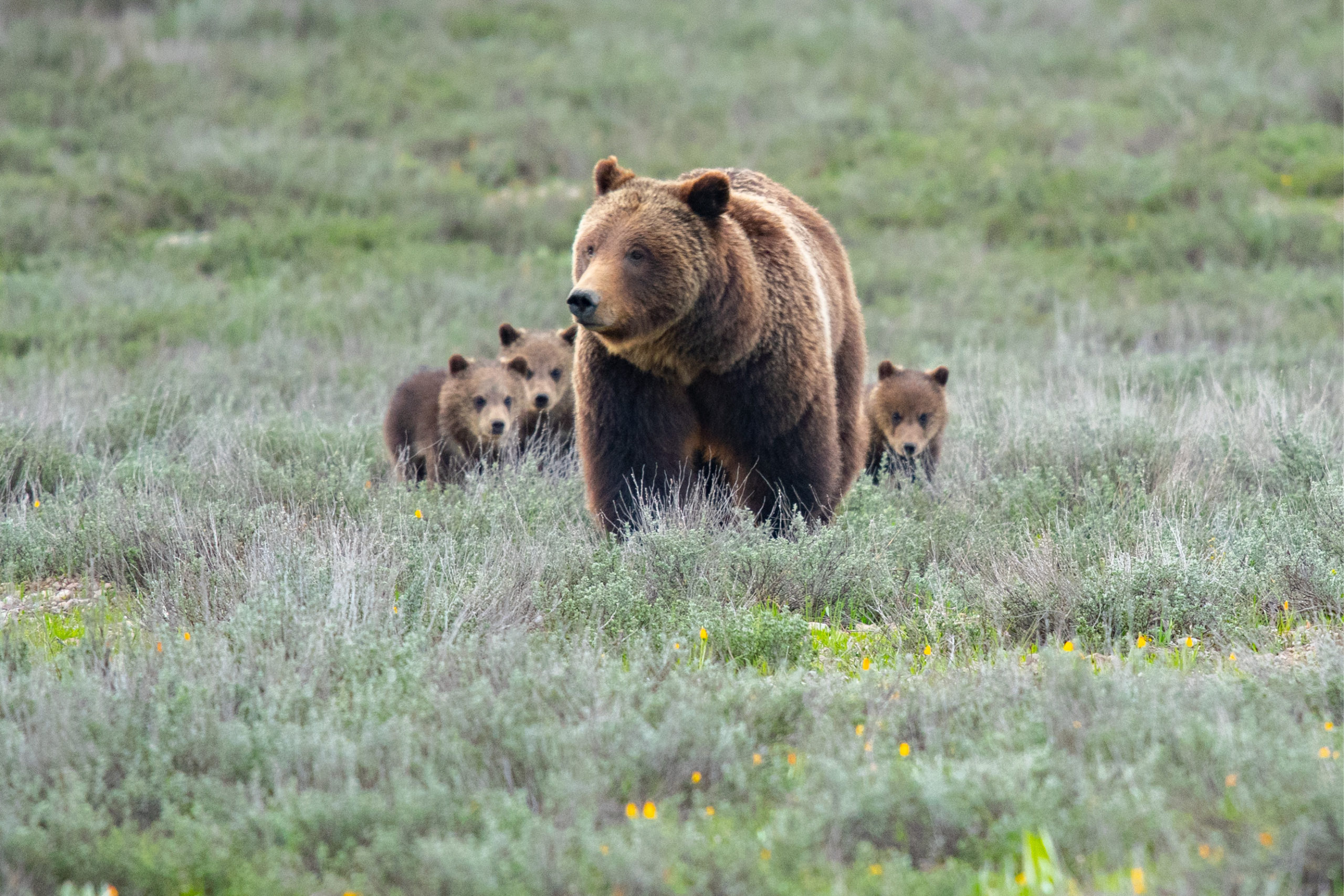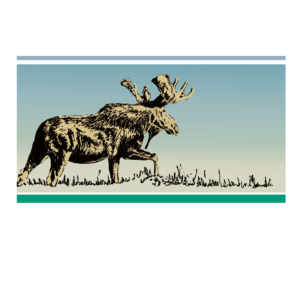The Most Famous Bear
In The Greater Yellowstone Ecosystem
Grizzly 399 is the most famous bear in the Greater Yellowstone Ecosystem, if not anywhere in the world! What other bear has her own social media accounts, a children’s book written about her, and attracts the gaze of thousands, maybe millions, of wildlife watchers annually. Born in 1996, this seven foot, nearly 400 pound grizzly, who has given birth to more than 20 cubs, has become an ambassador of grizzly conservation.
Today, 399 is one of more than 500 grizzlies who live in the Greater Yellowstone Ecosystem. But in the late 1800s, predator eradication and habitat fragmentation greatly reduced grizzly populations as settlers moved west. Further, when Yellowstone National Park was established, human food and garbage was left available to the bears. The grizzlies were rewarded by an easy meal and visitors were entertained by these food-conditioned bears, often hand feeding or intentionally providing food to the bears. In the late 1960s Park officials decided to suddenly close garbage dumps to force bears to eat more natural foods and to reduce human-bear conflicts and property damage. However, the sudden closure left food-habituated grizzlies searching for food in campgrounds and developed areas, coming into conflict with people and livestock. More than 200 bears were killed or relocated by wildlife managers and land owners killed bears to protect livestock. The grizzlies had also become so dependent on human-provided food that the lack of calories led to smaller litter sizes and smaller cubs. In 1975 fewer than 150 grizzlies were in the Greater Yellowstone Ecosystem and so the federal government was forced to protect grizzly bears and listed them as threatened under the Endangered Species Act. This protected status helped their numbers rebound by protecting the habitats they rely on and prohibiting hunting.
Grizzlies are important members of the ecosystem. As powerful predators, they limit the populations of elk and other smaller mammals. They’re great fishers, catching cutthroat trout as they spawn. Their excellent sense of smell brings them to old carcasses to scavenge and they feast on berries and other foliage.
In the spring of 2020, Grizzly 399 was seen emerging from her den with 4 cubs. Since grizzlies usually give birth to 2 cubs, or 3 at most, this was a rare feat! The family of 5 was seen frequently throughout the summer, often grazing near roadsides and becoming comfortable close to humans. While preparing for hibernation, the grizzlies entered residential areas near Jackson and ate honey from an apiary, grain mix for livestock, and feasted on a residential compost pile. These food rewards reinforced the bears’ comfort around humans and taught the cubs that these are okay places to eat. Food conditioned bears, just as they were in the ‘60s, can end up in greater conflict with humans. When that happens, they are often euthanized for human safety. It is our responsibility to properly store food attractants to protect grizzlies like 399 and all of the wildlife who call Teton County home.
Photo: EcoTour Adventures
Jackson Hole Wildlife Foundation
Being Wild Jackson Hole is an effort lead by the Jackson Hole Wildlife Foundation to help ensure survival of the wild spirit of this special place by embracing and promoting environmental stewardship, along with the values and actions that support it. We encourage visitors to learn about and participate fully in our conservation efforts.
Funded by:




